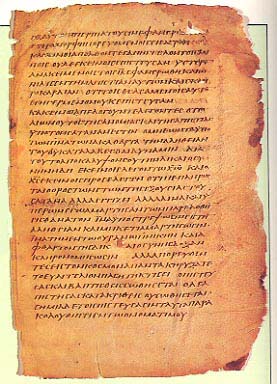Fifth Century Manuscript Contains Variant Reading of Mark 16
Sidebar to: Books in Brief

A total of 5,366 manuscripts of all or part of the Greek New Testament survive from antiquity, but of this total, only 35 preserve substantially the entire New Testament.
In these manuscripts are many variant readings of the New Testament. In the parchment page reproduced here, from a codex, or leaf-book, dating to the late fourth or early fifth century, we see a unique example of such a variant reading. The complete manuscript, called Codex Washingtonianus because it is part of the Freer Collection in Washington, D.C., contains the four Gospels except Mark 15:13–38 and John 14:25–16:7. This page from Mark, following 16:14 is one-of-a-kind—it contains an additional 16 lines of text that do not occur in any of the other surviving Greek Bible manuscripts. However, St. Jerome in the fourth century included part of this addition in Latin in one of his writings and stated that the passage was present “in certain copies and especially in Greek codices.”a In the Codex Washingtonianus we have confirmation of the accuracy of Jerome’s observation.
The additional passage describes an event that occurs after Jesus has been crucified, has risen from the dead and has appeared to several of his followers. The passage follows Mark 16:14, which reads:
Already a library member? Log in here.
Institution user? Log in with your IP address.

